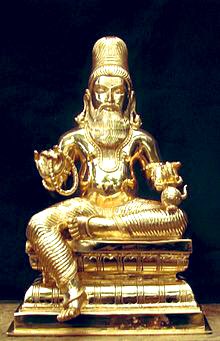
Pic-2: A lamp being lit by a Hindu woman, pic credit: pinterest
Kerala is called the God’ own country, the scenic views and backwaters do give a feeling that God’s live here. But what escapes the eyes of dilettante is that the people living in Kerala are very religious. Since southern India has faced very few external invasions, the ancient rituals still remain intact here. One such ritual is lighting lamps in the tiny groves of snakes. This ritual has a scientific reason behind it like every other Hindu ritual.
Plethora of plots and temples in Kerala have dedicated space for Naga (serpent) Devta (lord). This is called Sarpa-Kavu where Sarpam means Snake and Kavu means shrine. A Sarpa-Kavu usually has tiny snake idols smeared with turmeric, where a diya (lamp) is lit everyday. But these groves of snakes are associated with some very strict rules, one of them is —to not visit the Sarpa-Kavu often. If one were to ruminate, this rule is the reason why most of the Sarpa-kavu have lush green vegetation.

The folklore says the great sage Parshurama, who is considered the creator of Kerala, wanted Kerala to be inhabited but alas, the place had dense forests and venomous snakes. So he was unable to convince anyone to live here. This is when Parshurama propitiated lord Shiva, who is considered one of the gods of Hindu trinity, and is also believed to protect his devotees from venom. Lord Shiva agreed to help Parshurama but at one condition that he and the inhabitants of Kerala must worship snakes and not kill them. Parshurama did not renege from his promise and went on to establish 108 Shiva temples across Kerala. Among them 2 very famous Naga-Devta temples are in Vettikottu & Mannarassala. The latter ostensibly has abt 30,000 snake idols & images.


The science behind establishing these snake groves is— since flora of Sarpa-Kavu is undisturbed, many exotic and medicinal plants are found here. It has been proven that such “snake-zones”, help in stabilizing ecosystem of the land, and that it helps in conserving soil and water.

At the Sarpa-Kavu, there’s an annual ritual called Sarpa-thullal or the snake-dance performed by people called Pulluvan. It’s done under strict supervision, like—the Kalam (rangoli) for the occasion should be prepared with just 5 colours, and it must use natural ingredients. Watching Sarpa-thullal is an enthralling experience!

Every Sarpa-Kavu is associated with mystical rituals, stories and also with the Pambatti Sidhhar, who were spiritually evolved sages with the knack to use snake venom as a medicine. Modern day science can ascertain the veracity of this.

In modern day concrete jungles, eco-zone is considered an environment friendly approach, but not many know that to the ancient Hindus, Santanis, this was a way of life. Namaste!

An article by Levina
Copying the article or an excerpt without giving due credit to the website and author will be considered an infringement of copyright.

[…] Mysterious snake temples of Kerala […]
Fantastic article only she can write. In North India we also worship Nag Devta and we Rajputs (Khatriyas) believe we are descendants of Maharaja Parikshit and Janmejaya. As Parikshit was biten by Takshak Janmejaya perfomed a Nag Yagya. Then Takshak begged for pardon and said it will always help his offsprings if they don’t harm the snakes.